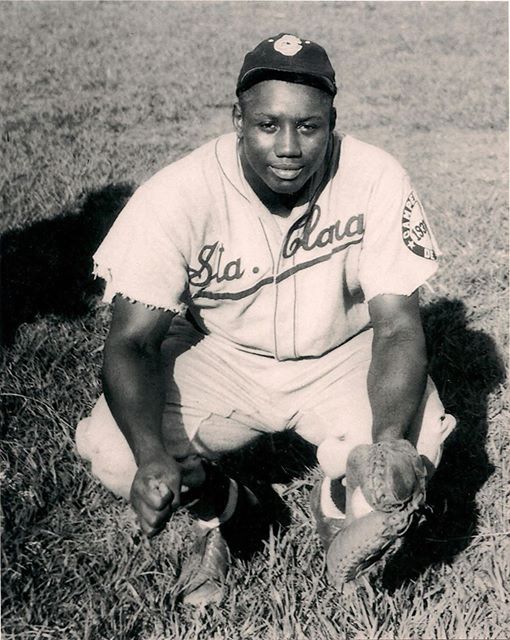Scroll Down to Read Today’s Essay
Subscribe to Baseball History Comes Alive for automatic updates. As a Free Bonus, you’ll get instant access to my Special Report: Gary’s Handy Dandy World Series Reference Guide!
Josh Gibson Photo Gallery
Click on any image below to see photos in full size and to start Photo Gallery:
Today, I’ll continue with our month-long celebration of Black History Month with a short tribute to Josh Gibson I wrote a few years ago. How he would have hit if allowed to compete against major league pitching for his entire career career, we’ll never know. But there’s no debate that he was a great hitter, one of the best ever.
Salute to The Great Josh Gibson
A tragic and legendary figure, Josh Gibson was the greatest power hitter in Negro League history, despite playing most of his career in two of baseball’s most cavernous ballparks, Forbes Field and Griffith Stadium. Often called “The Black Babe Ruth,” stories of his mammoth home runs became legend. Gibson utilized a fluid, compact swing to hit for both average and power.
Satchel Paige named Gibson as the greatest hitter who ever lived. In various research publications, the 6-foot-1, 215-pounder has been credited with as many as 84 homers in one season. His Hall of Fame plaque says he hit “almost 800” homers in his 17-year career. Gibson’s lifetime batting average against all competition was higher than .350, with one book putting it at .384, best in Negro League history. In recorded at-bats against big league pitching, Gibson hit .426. He also won nine home-run titles and four batting championships. In two seasons in the late 1930s, he reportedly hit higher than .400 with a slugging average above 1.000.
Although a mediocre defensive catcher early in his career, he steadily improved. Teammate “Cool Papa” Bell said Gibson was a good defensive catcher, with a strong arm. His only weakness was difficulty with pop fouls.
In early 1943, Gibson mysteriously fell into a coma and was diagnosed with a brain tumor. He lived the next four years with recurring headaches. Gibson was hospitalized the following year for mental observation. Despite the headaches and a growing drinking problem, he continued to tear apart the Negro League, winning two more batting crowns and three more home-run titles over the next four seasons. Gibson died of a stroke in Pittsburgh in 1947 at age 35, tragically just three months before Jackie Robinson broke the color barrier.
Larry Doby once said of Gibson:
“One of the things that was disappointing and disheartening to a lot of the black players at the time was that Jackie – although a great player – was not the best player. The best was Josh Gibson. I think that’s one of the reasons why Josh died so early – he was heartbroken.”
In 1972, Major League Baseball recognized Gibson’s accomplishments as he and Buck Leonard were inducted into the Baseball Hall of Fame.
Gary Livacari
Photo Credits: The George Brace Baseball Collection; The Leslie Jones Baseball Collection; Public Domain.
Information: Excerpts edited from the Josh Gibson Wikipedia page
Subscribe to our website, Baseball History Comes Alive with over 1400 fully categorized baseball essays and photo galleries, now surpassing the one million hits mark with 1,154,000 hits and over 950 subscribers: https://wp.me/P7a04E-2he

